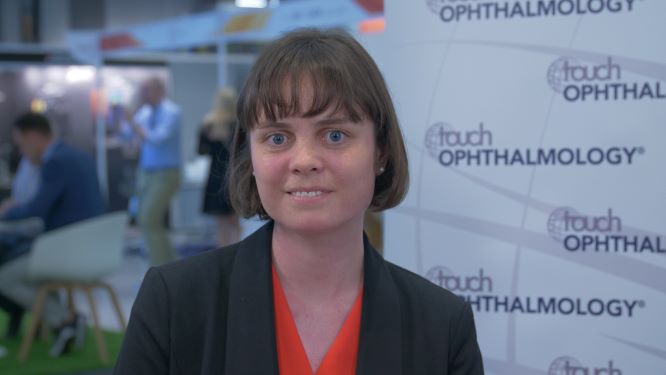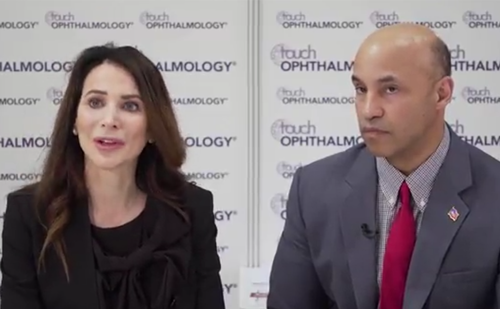It was a pleasure to catch up with Dr Raymond Douglas (Cedars-Sinai Medical Center, Los Angeles, CA, USA), who talked us through the latest updates in thyroid eye disease and the reasons it is so often misdiagnosed.
Questions:
- Could you give us a brief overview of the relationship between hyperthyroidism and thyroid eye disease (TED)? (0:18)
- Why is TED so frequently misdiagnosed? (1:27)
- What are the most important considerations in the differential diagnosis of TED? (3:02)
The presentation entitled, TED talk: Update on thyroid eye disease was presented at the Hawaiian Eye and Retina 2023 meeting, 14–20 January, 2023.
Disclosures: Raymond Douglas has no financial or non-financial relationships or activities to declare in relation to this interview
Support: Interview and filming supported by Touch Medical Media. Interview conducted by Lisa Glass.
Filmed as a highlight of Hawaiian Eye and Retina 2023.
Hi I’m Dr. Raymond Douglas, and I am an oculaplastic and orbital surgeon practicing here in Los Angeles, California, and specializing in thyroid disease.
Could you give us a brief overview of the relationship between hyperthyroidism and thyroid eye disease (TED)?
So overall hypothyroidism is caused by the body’s autoimmune attack on the thyroid and the body attacks 2 receptors in Graves’ disease and thyroid disease. The receptor is the thyroid atropine receptor and that’s what causes hypothyroidism. So the body attacks and constantly turns that receptor on and then that causes the thyroid hormone levels to rise and what’s called hypothyroidism, well, the other receptor is the IGF 1 receptor and that one’s the receptor that is associated with thyroid disease, the immune system attacks both, but the IGF 1 receptors primarily around the eyes. And so that’s why you see the eyes symptom changes and signs of thyroid eye disease occur around the eyes because that’s where that receptor is located. So they’re very much interrelated based upon how the immune system attacks these 2 receptors in this autoimmune disease.
Why is TED so frequently misdiagnosed?
TED is a very hard thing to diagnose because it can present in so many different ways. So many patients will come in and they’ll just have some red eyes and they don’t really know why it’s occurring, but it’s red eyes and some puffiness and it might look very much like allergy. And they’ll come to their primary care often. And it’s not the first thing you think of when you have red and puffy eyes is, oh, I have thyroid disease. It’s usually well, it’s probably something common, it’s probably allergies, it’s probably something that, you know, sleep related or et cetera. And then what happens is that you can get drops and it’ll make it a little bit better, but then it kind of comes back and then gets sent off to a different specialist to think about it and to, you know, to go and go from there. But want it. But so many times in those early warning signs of, you know, even pain and pressure behind the eyes, the appearance of the eyelids, the swelling, the injection can look like so many other things that it gets lost and people don’t think of thyroid disease as a cause. So one of the great campaigns is really just thinking of this a little earlier. Should we be thinking of thyroid disease and run some simple tests to determine, well, maybe this is thyroid disease and not just an allergy? So it’s really important sometimes for patients to even propose, well, could this be anything else? Could this be something that’s associated more with the systemic problem than just, you know, allergy, etc.?
What are the most important considerations in the differential diagnosis of TED?
TED, when you begin to see some of the changes that occur in the eyes, it depends on which changes that are occurring. So if you have redness and swelling, then you want to think of other things that cause inflammation. Well, could this be allergy? Could it be some other type of inflammatory process that causes these types of things and that, you know, in general, medical doctor or an endocrinologist can help to eliminate in other forms of thyroid disease, sometimes just eye bulging or double vision that occurs. And that can be due to a variety of other things that could be due to a tumor from behind the eyes that is pushing the eyes forward or double vision can be due to some type of a nerve dysfunction or how the eyes move together. And that can be sometimes caused by inflammation and infection or sometimes even tumors. So the most important thing is to see an ophthalmologist, and it depends upon what signs you’re seeing initially. But a lot of times what’s required is a good eye exam to make sure that there is not anything else going on. And sometimes a CT scan is to make sure that this is really due to thyroid eye disease in the CT scan or MRI will very definitively rule out any type of cancer and kind of rule in or point to thyroid disease. So those tests can be very important in leading through this differential diagnosis and heterogeneous disease.
Subtitles and transcript were auto-generated.





